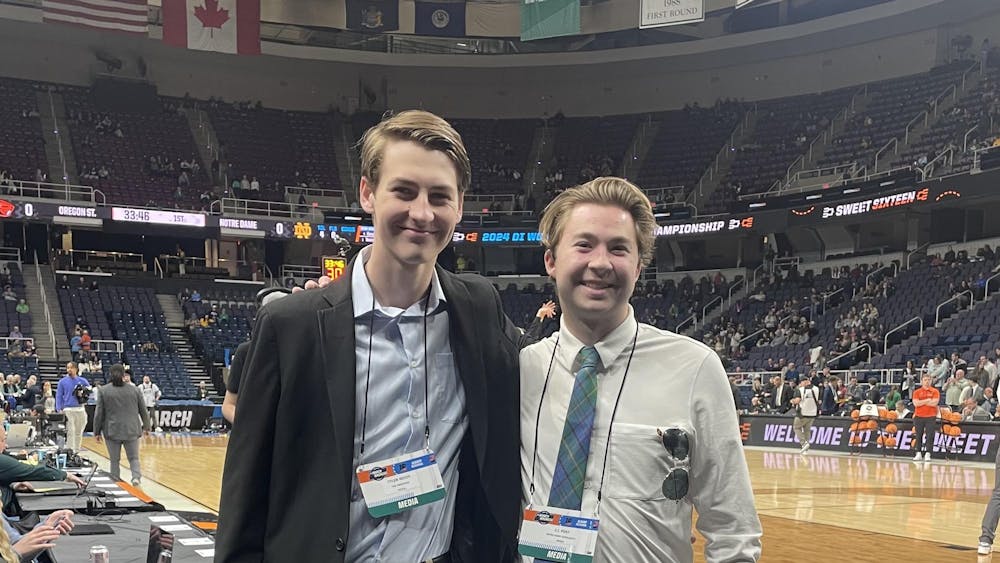I know the South vs. North debate is a bit tired. We all have our opinions, and most of us refuse to budge. We agonize over food quality, dining layout, chair comfort, TV access, even the illusive criteria of “vibes,” but I think there is one category we neglect in these overwrought conversations. I must confess up front that I am an SDH loyalist through and through (who wants to eat at a combination middle school cafeteria/hotel continental breakfast station all while being watched by oversized photos of tomatoes?), but any dining hall is ripe with opportunities for one of my favorite pastimes — people-watching.
People-watching is often a subconscious act. You don’t even realize you’ve been paying attention to that group three tables over until you ask your friend her hypotheses on the topic of their argument. It relies on attention to the idiosyncrasies of others — overheard bits of conversation, body language, relationship interactions or clothing — to guess at their story with limited details. When described in the abstract, I recognize that people-watching can sound a bit creepy, but I think it is simply the outcome of our instinctive curiosity. We are all watching each other, even if we’re reluctant to admit it.
Despite its introverted implications, I find that people-watching is best done with the company of a close friend. You can bounce ideas off each other as you observe new details, coming closer to unlocking the puzzle of another pair’s relationship — recent exes, first dates or maybe a friendship with romantic tension? Of course, people-watching is not a precise science. I’m sure that my guesses are wrong most of the time. But that doesn’t diminish its value as a dinner-time diversion. Whenever the conversation lulls, there’s almost always something to say about the strangers around you.
My friends and I would all self-identify as life-long people-watchers, but our friend group started collectively people-watching at the beginning of this semester. We sat for hours in SDH, the Sunday after break, observing those around us. We noted the new faces, returned from a semester of study abroad, our mutual friends who seemed to be handling an awkward conversation and the happy reunions of everyone still floating on the Christmas vacation high. Since then, we’ve identified the regular characters on the sitcom we call SDH dinnertime — people we don’t know but who eat dinner at the same time as us. We vie for the seat facing the middle aisle of the dining hall because the best observations require an unobstructed view.
Now, I know I said that both dining halls offer ample opportunity for people-watching, but South really is the better dining hall for this particular pastime. In South, there are no nooks and crannies to hide in — the crowd is all around. The dinnertime crew is always large and chatty. People loiter around the sticky tables of SDH for a while, chatting with their friends and avoiding their homework, in a way that they do not anywhere else. And the slightly humiliating tradition of clapping when a SDH patron drops their plate or cutlery is prime for funny or endearing reactions.
People-watching at SDH focuses on the commonplace. Just another Sunday night dinner. But if you pay enough attention, it can also be a rare glimpse into the lives of your peers. For a brief moment, we are bound up in each other’s evenings — my dinnertime is your dinnertime is everyone’s dinnertime. SDH’s cavernous rooms and long tables force me to look around and acknowledge the community at Notre Dame. Even though I might know nothing about the person at the other end of my SDH table, I get to witness the sacred ritual of mealtime with friends, full of laughter and stress and camaraderie and everything in between.
So I hope you take a moment to look around at dinner tonight. I hope you appreciate the beauty of hundreds of students sitting in one room, eating together.
And I hope you choose South Dining Hall.













